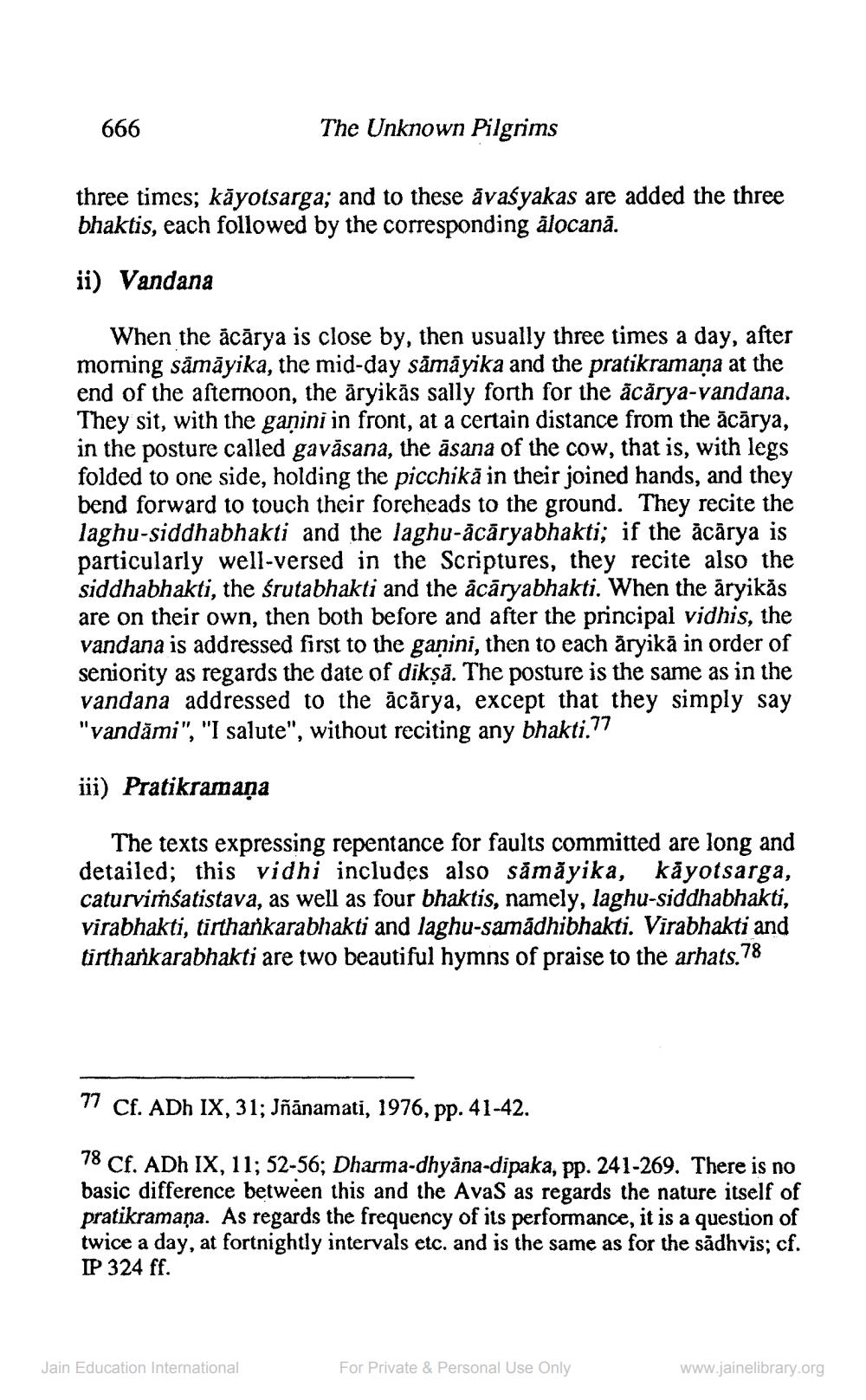________________
666
The Unknown Pilgrims
three times; kāyotsarga; and to these avasyakas are added the three bhaktis, each followed by the corresponding alocanā.
ii) Vandana
When the acārya is close by, then usually three times a day, after morning sämāyika, the mid-day såmáyika and the pratikramana at the end of the afternoon, the āryikās sally forth for the acărya-vandana. They sit, with the ganini in front, at a certain distance from the ācārya, in the posture called gavāsana, the asana of the cow, that is, with legs folded to one side, holding the picchikā in their joined hands, and they bend forward to touch their foreheads to the ground. They recite the laghu-siddhabhakti and the laghu-ācāryabhakti; if the acārya is particularly well-versed in the Scriptures, they recite also the siddhabhakti, the śrutabhakti and the acāryabhakti. When the āryikās are on their own, then both before and after the principal vidhis, the vandana is addressed first to the ganini, then to each äryikā in order of seniority as regards the date of dikṣā. The posture is the same as in the vandana addressed to the ācārya, except that they simply say "vandāmi", "I salute", without reciting any bhakti.77
iii) Pratikramana
The texts expressing repentance for faults committed are long and detailed; this vidhi includes also sāmāyika, kāyotsarga, caturvimśatistava, as well as four bhaktis, namely, laghu-siddhabhakti, virabhakti, tirthankarabhakti and laghu-samadhibhakti. Virabhakti and tirtharkarabhakti are two beautiful hymns of praise to the arhats.78
77 Cf. ADh IX, 31; Jñānamati, 1976, pp. 41-42.
78 Cf. ADh IX, 11; 52-56; Dharma-dhyana-dipaka, pp. 241-269. There is no basic difference between this and the AvaS as regards the nature itself of pratikramaņa. As regards the frequency of its performance, it is a question of twice a day, at fortnightly intervals etc. and is the same as for the sădhvis; cf. IP 324 ff.
Jain Education International
For Private & Personal Use Only
www.jainelibrary.org




